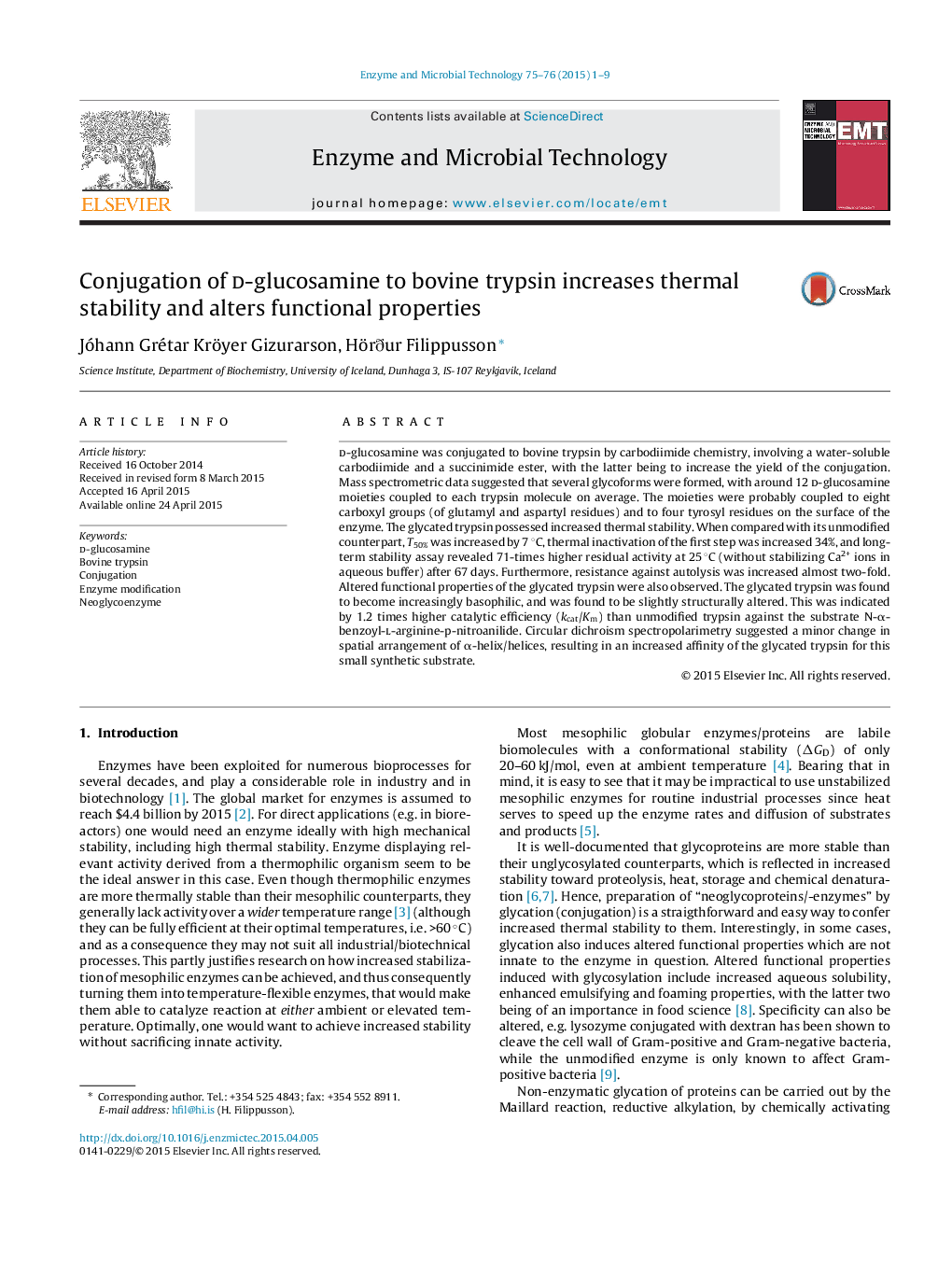| Article ID | Journal | Published Year | Pages | File Type |
|---|---|---|---|---|
| 16973 | Enzyme and Microbial Technology | 2015 | 9 Pages |
•Glucosamine was conjugated to bovine trypsin by carbodiimide and succinimide ester chemistry.•Some 12 glucosamine residues were coupled to each trypsin molecule.•The glycated enzyme showed increased thermal stability, storage stability and resistance to autolysis.
d-glucosamine was conjugated to bovine trypsin by carbodiimide chemistry, involving a water-soluble carbodiimide and a succinimide ester, with the latter being to increase the yield of the conjugation. Mass spectrometric data suggested that several glycoforms were formed, with around 12 d-glucosamine moieties coupled to each trypsin molecule on average. The moieties were probably coupled to eight carboxyl groups (of glutamyl and aspartyl residues) and to four tyrosyl residues on the surface of the enzyme. The glycated trypsin possessed increased thermal stability. When compared with its unmodified counterpart, T50% was increased by 7 °C, thermal inactivation of the first step was increased 34%, and long-term stability assay revealed 71-times higher residual activity at 25 °C (without stabilizing Ca2+ ions in aqueous buffer) after 67 days. Furthermore, resistance against autolysis was increased almost two-fold. Altered functional properties of the glycated trypsin were also observed. The glycated trypsin was found to become increasingly basophilic, and was found to be slightly structurally altered. This was indicated by 1.2 times higher catalytic efficiency (kcat/Km) than unmodified trypsin against the substrate N-α-benzoyl-l-arginine-p-nitroanilide. Circular dichroism spectropolarimetry suggested a minor change in spatial arrangement of α-helix/helices, resulting in an increased affinity of the glycated trypsin for this small synthetic substrate.
